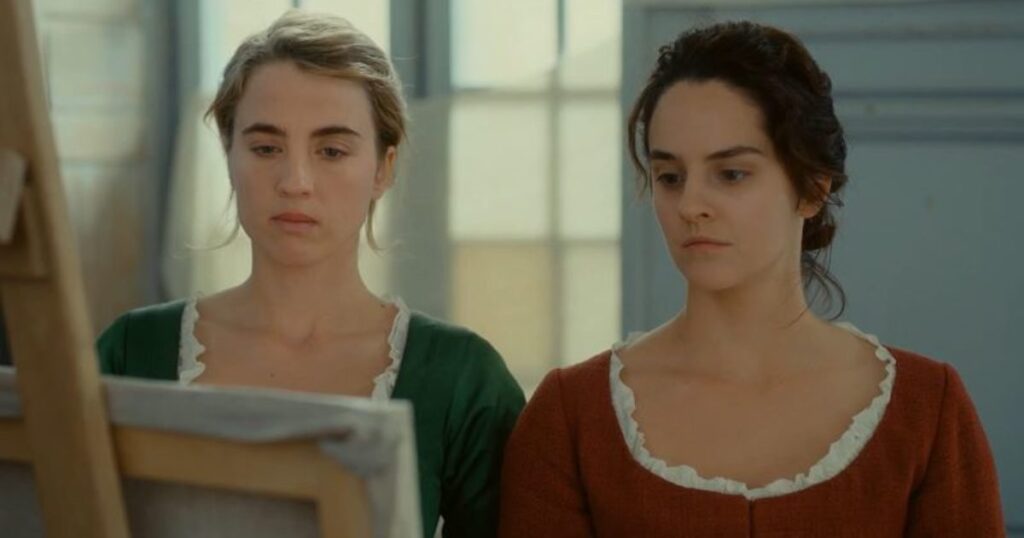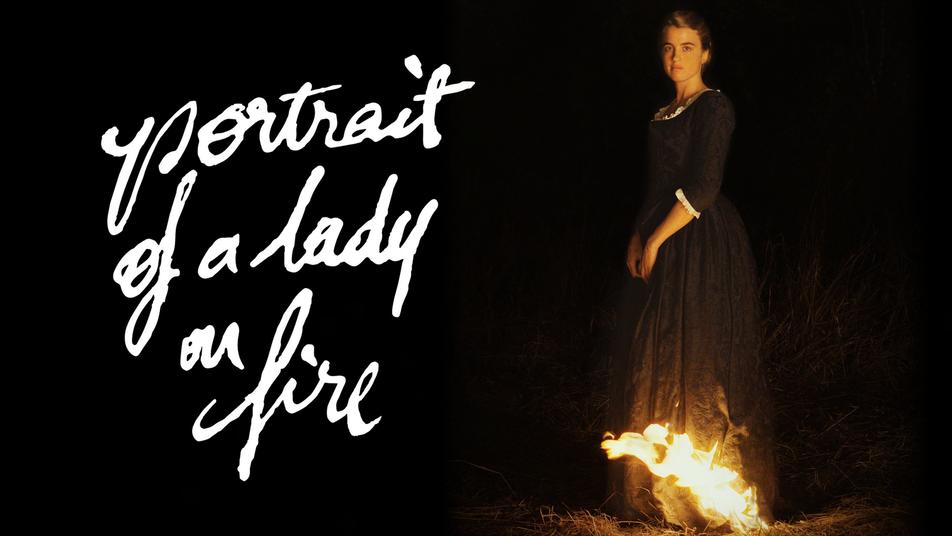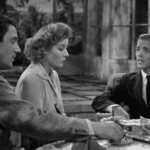‘Portrait of a Lady on Fire’ begins with a young art teacher named Marianne, played by Noémie Merlant, as she teaches a class of young girls the art of portraiture. Her thoughts are interrupted when she sees an old painting she herself did titled ‘Portrait of a Lady on Fire’, which takes her back in her mind to years before when she was hired to paint an portrait of a young woman set to be wed. Marianne is sent to a remote island for this commission, where she meets the woman Héloïse, played by Adèle Haenel, who is as sheltered by the isolation as she appears to be with her own emotions. Over time the two women draw closer to each other, starting a relationship that goes beyond the creation of a painting.
Both women have been repressed in their own ways by society, though Héloïse, who is told not even to leave on her own for fear she may perish, as her sister did, is clearly the most closed off. This makes Marianne’s job difficult as she’s to know every inch of Héloïse face so as to provide a perfect portrait for her Héloïse’s future husband. Stolen glances, close conversation, and walks on the beach, are the only moments the two have together, yet Marianne’s able to start her work. Thus far much of the tension is purely based on the idea of Héloïse catching Marianne at her work, as she’s often had to hide her paint work and her dirty hands; however, a lesser film would make this the whole plot and this film dispenses with that setup at the mid-point. Instead, the tension here is seeing how these two women try to find own happiness world that tries to define their path for them, and all the while knowing its likely fleeting at best.
The film not only does an incredible job at changing up our expectations of what the story of these two women could be, but it also reimagines portraiture as intimacy. Yes portrait painting has famously been used as a lead-in to romance, and sex, such as in Titanic’s famous ‘Paint me like one of your French girls’ scene. Whereby Titanic’s heat in this scene leads to a steamy moment later in the film in the car, in ‘Portrait of a Lady on Fire’ the heat is both literal and figurative, as the portrait sessions between Marianne and Héloïse draw them close together in a relationship that feels far more real than Jack and Rose’s. In this film, we are given time to really see the way the artist and model alike look at, and draw each other in, and we are shown how these moments serve to bring these two women together.

Adèle Haenel and Noémie Merlant in ‘Portrait of a Lady on Fire’
‘Portrait of a Lady on Fire’ does more than just showcase a forbidden romance, but it also subtly shows how these two are finding each other in a world defined by the patriarchy. Unlike a film like Barbie, who shouts these themes with colorful aplomb, ‘Portait of a Lady on Fire’ is subtler yet still equally effective with its points on what life is like for women. A scene of a young maid Sophie, played by Luàna Bajrami, lying back besides a baby is one of the most striking, and provocative, I’ve scene in sometime. Likewise the final shot of the film, which I will not spoil, is absolutely incredible and one of the most beautiful final shots in a film. This shot is held for an inordinate amount of time that seems surprising at first, but likewise so fitting that anything else would not seem right. What’s probably most effective about this film’s point on societal standards is that by the time we are introduced to a man in the film, which is incredibly late in the film, it almost has the same effect as a jump scare. Likewise when we see Marianne in an art show, she is in a crowded room full of men, and she has to make her way through it carefully and cautiously, a clear symbol of what life is like for a woman in her time (and all too often our time.)
Ultimately this is a film I’ve realized I love even more as I sit with it in my mind, and I already had an immediately positive reaction when the credits rolled. For like an excellent portrait, there’s what you see at first glance, but there’s also the emotions you get as you truly ponder the layers of the work and what went into the work itself. Speaking for myself I know I will certainly revisit ‘Portrait of a Lady on Fire’ in the future to see what further emotions and insight I gain from such a wonderful work of art.









